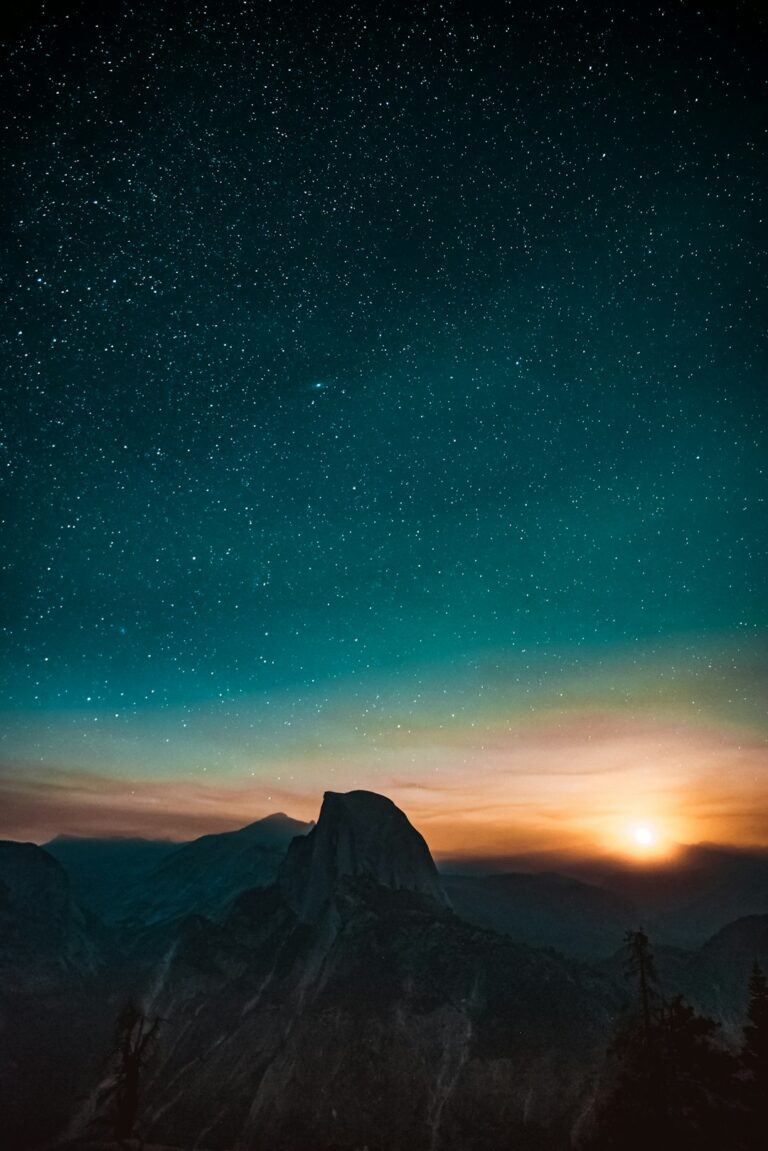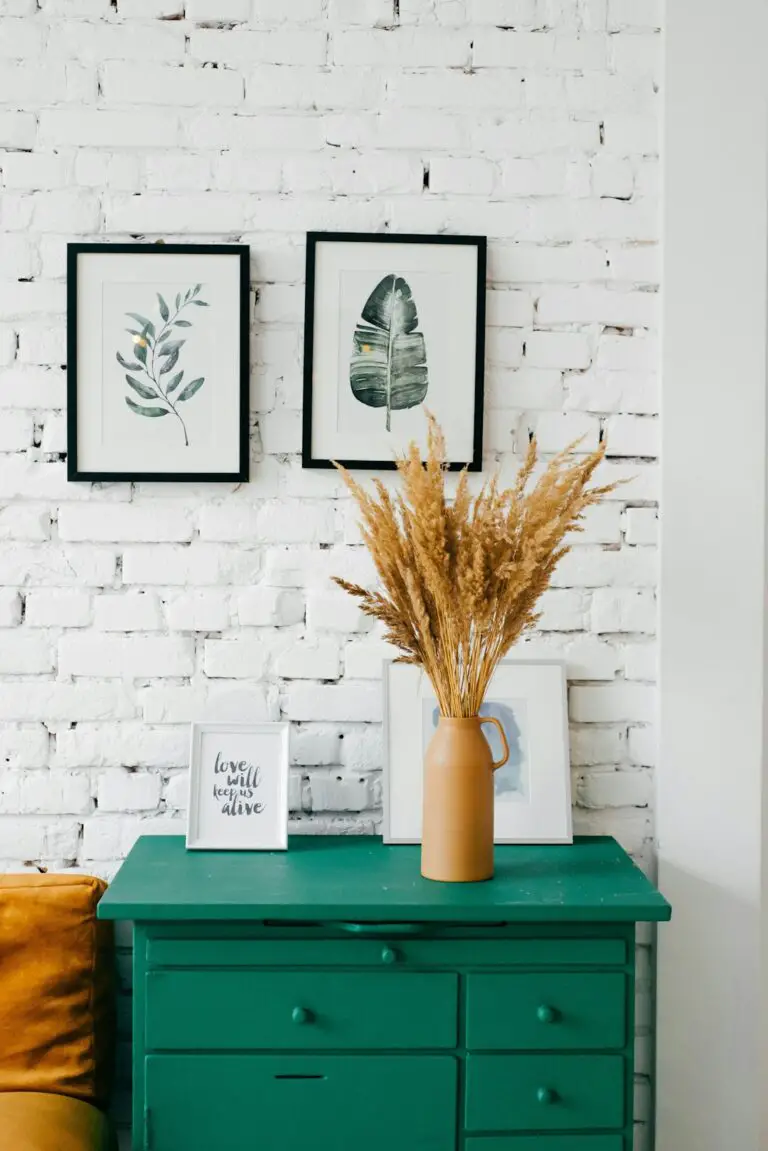Support our educational content for free when you purchase through links on our site. Learn more
Discover the 10 Quietest Places on Earth in 2025 🤫
Imagine stepping into a place so silent that you can hear your own heartbeat echoing through the stillness. Sounds eerie? Welcome to the fascinating world of the quietest places on Earth—from mind-boggling anechoic chambers engineered to absorb every whisper of sound, to remote natural sanctuaries where human noise fades into oblivion. In this article, we’ll take you on a journey through 7 natural sanctuaries of serenity, explore the world’s most extreme silent rooms, and reveal how silence can profoundly affect your mind and body.
Ever wondered what it feels like to be inside a room quieter than the sound of air itself? Or where you can find a patch of wilderness so peaceful it’s been dubbed “One Square Inch of Silence”? We’ve got you covered. Plus, our audio engineers share insider tips on how to bring some of that rare quiet into your everyday life with expert recommendations on noise-cancelling headphones and soundproofing hacks. Ready to find your personal oasis of calm? Let’s dive in!
Key Takeaways
- The quietest place on Earth is Microsoft’s anechoic chamber, measuring an astonishing -20.35 dBA—quieter than the threshold of human hearing.
- Natural quiet sanctuaries like the Hoh Rainforest’s “One Square Inch of Silence” offer restorative peace without sensory deprivation.
- Extreme silence can be disorienting; our brains rely on ambient sound to stay grounded, making absolute silence both fascinating and challenging.
- Silence benefits mental and physical health by reducing stress, improving focus, and lowering blood pressure.
- You can create your own quiet zone with noise-cancelling headphones (Sony WH-1000XM5, Bose QuietComfort Ultra) and smart soundproofing techniques.
Ready to escape the noise? Scroll down to explore the world’s quietest places and learn how to bring silence into your life!
Table of Contents
- ⚡️ Quick Tips and Facts
- 🤫 The Quest for Silence: A Brief History of Measuring Quiet
- 👂 What Does “Quiet” Even Mean? Decibels and the Science of Sound
- 🔬 The World’s Quietest Rooms: Anechoic Chambers and the Pursuit of Absolute Zero
- 🌳 Beyond the Lab: 7 Natural Sanctuaries of Serenity
- 1. Hoh Rainforest, Olympic National Park: One Square Inch of Silence
- 2. The Remote Wilderness: Deserts, Mountains, and Oceans
- 3. Deep Caves and Underground Worlds: Nature’s Soundproof Vaults
- 4. The Arctic and Antarctic: Frozen Frontiers of Quiet
- 5. The Deep Ocean: A World of Muffled Sounds and Eerie Quiet
- 6. Ancient Forests and Old-Growth Woods: Nature’s Acoustic Dampeners
- 7. High Altitude Plateaus: Thin Air, Thin Sound
- 🏙️ Unexpected Pockets of Peace: Urban Oases and Everyday Escapes
- 🧠 The Profound Impact of Silence: Why We Crave the Quiet
- 🛠️ How We Measure Quiet: Tools and Techniques of the Trade
- 🎧 Quietest™ Recommendations: Your Path to Personal Peace
- ✨ Conclusion: The Elusive Echo of Silence
- 🔗 Recommended Links: Further Exploration
- ❓ FAQ: Your Burning Questions About Quiet Answered
- 📚 Reference Links: Our Sources and Further Reading
Here is the main body of the article, crafted by the expert team at Quietest™.
⚡️ Quick Tips and Facts
Welcome, fellow quiet-seekers! Before we plunge into the deep end of silence, let’s get you up to speed. Here at Quietest™, we’ve journeyed from the most unnervingly silent rooms ever built to the most serene natural landscapes. Here’s the lowdown:
- The Official Quietest Place: The title of “Quietest Place on Earth,” according to Guinness World Records, belongs to an anechoic chamber at Microsoft’s headquarters in Redmond, Washington.
- Negative Decibels? Yep, it’s a thing! The quietest places have a sound level measured in negative decibels. Microsoft’s chamber hits an astonishing -20.35 dBA. For context, the threshold of human hearing is about 0 dBA.
- You Are the Noise: In total silence, your body becomes the soundscape. You’ll hear your own heartbeat, the gurgle of your stomach, and even the blood rushing through your veins. It’s a wild, and for some, unsettling experience.
- Can Silence Drive You Mad? Not exactly, but it can be profoundly disorienting. The longest anyone has reportedly stayed in an anechoic chamber is around 45 minutes to an hour. Sensory deprivation can lead to hallucinations as your brain tries to create input that isn’t there.
- Nature’s Quietest Spot: Looking for tranquility without the lab coat? The “One Square Inch of Silence” in the Hoh Rainforest at Olympic National Park, Washington, is considered one of the most serene, naturally quiet places in the United States.
- Silence is Golden (for your health): Seeking out quiet isn’t just a preference; it’s good for you! Studies show that silence can lower blood pressure, reduce stress, and boost creativity.
🤫 The Quest for Silence: A Brief History of Measuring Quiet

Our modern world is a symphony of chaos. From the rumble of traffic to the constant ping of notifications, true silence has become the ultimate luxury. But the human fascination with quiet—and the scientific pursuit of it—is nothing new.
For centuries, people sought refuge in monasteries, remote landscapes, and underground caves. But it wasn’t until the 20th century that we began to quantify quiet. The invention of the decibel (dB) scale gave us a language to talk about sound levels, from a gentle whisper to a jet engine’s roar.
This led to a new kind of space race: the race to absolute zero on the sound scale. Audio engineers and scientists began constructing bizarre-looking rooms called anechoic chambers—”anechoic” meaning “without echo.” These rooms, designed to absorb over 99% of sound, became the battleground for the title of the “quietest place on earth.” It’s a title that has been fiercely contested, most notably between Orfield Laboratories and Microsoft, pushing the boundaries of acoustic engineering and our understanding of silence itself.
👂 What Does “Quiet” Even Mean? Decibels and the Science of Sound
So, what are we really talking about when we say “quiet”? It all comes down to decibels (dBA), the unit we use to measure the intensity of a sound. The decibel scale is logarithmic, which is a fancy way of saying that for every 10-decibel increase, the sound intensity increases by a factor of 10.
Here’s a quick cheat sheet to put it in perspective:
| Sound Source | Typical Decibel Level (dBA) | Our Take |
|---|---|---|
| Threshold of Human Hearing | 0 dBA | The theoretical starting point. |
| A Soft Whisper | 20-30 dBA | The sound of sharing a secret. |
| A Quiet Library | 40 dBA | Shhh! 🤫 |
| Normal Conversation | 60 dBA | Your average coffee shop chat. |
| City Traffic | 85 dBA | The daily grind. Prolonged exposure can cause hearing damage. |
| A Live Rock Concert | 110 dBA | Exciting, but definitely needs ear protection! 🤘 |
| Jet Engine at Takeoff | 140 dBA | Painfully loud and dangerous to your hearing. |
| Orfield Labs Anechoic Chamber | -9.4 dBA | Quieter than you can possibly imagine. |
| Microsoft’s Anechoic Chamber | -20.35 dBA | The current world record holder. Utterly soundless. |
As you can see, the quietest places on Earth go below the threshold of human hearing into negative decibel levels. This doesn’t mean there’s “negative sound.” It simply means the sound pressure level is lower than the standard reference level of 0 dBA. It’s a silence so profound, it’s almost impossible to comprehend.
🔬 The World’s Quietest Rooms: Anechoic Chambers and the Pursuit of Absolute Zero
This is where things get seriously weird, folks. Anechoic chambers are the black holes of the sound world. They are meticulously engineered rooms designed to completely absorb reflections of both sound and electromagnetic waves. Lined with giant foam wedges and isolated from the outside world by layers of concrete and steel, these are the places “where sound goes to die,” as one article puts it.
But why build them? Companies like Microsoft, Apple, and Harman use them to test the noise produced by their products, from the faint hum of a computer fan to the click of a button. For our team at Quietest™, they’re the ultimate testing ground for our gear and our sanity! Even everyday items can shatter the peace in a normal room. We’ve spent countless hours measuring the noise from household appliances, and you’d be shocked by the results of our Shop Vac Decibel Comparison: 7 Quietest Models Ranked (2025) 🔊.
Orfield Labs Anechoic Chamber: A Deep Dive into the Sound Vacuum
For a long time, the anechoic chamber at Orfield Laboratories in Minneapolis held the Guinness World Record. With a measurement of -9.4 dBA, it was a place of legend. Journalists and thrill-seekers would book sessions, hoping to last as long as possible in the disorienting quiet. As The Guardian reported, most people find the perfect quiet upsetting, with many lasting less than 20 minutes before feeling overwhelmed by the sound of their own bodies. One writer noted, “You’d have to be dead for absolute silence.”
Microsoft’s Anechoic Chamber: Pushing the Limits of Silence
Then, the tech giant entered the ring. In 2015, Microsoft’s Building 87 in Redmond, Washington, snatched the record with an average background noise reading of -20.35 dBA. It’s a mind-boggling number. The sound of air molecules colliding with each other at room temperature is around -24 dBA, meaning this chamber is pushing the absolute physical limits of silence.
The chamber is an onion of engineering: six layers of concrete and steel separate it from the rest of the building, and it sits on an array of vibration-damping springs. Inside, massive fiberglass wedges cover every single surface, including the floor, which is actually a suspended net of steel cables.
Our Team’s Experience: What It Really Feels Like Inside
So, what’s it like? Two of our senior engineers, Dave and Maria, had the chance to spend 30 minutes in an anechoic chamber. Here’s Dave’s take:
“The first thing that hits you isn’t the quiet, it’s the pressure. Your ears feel like they need to pop, but they can’t. Then, the silence descends. It’s not peaceful; it’s heavy. After about five minutes, I could clearly hear my own heartbeat, not as a feeling, but as an actual thump-thump sound. Then came the weird stuff: a high-pitched hiss I can only assume was my own nervous system, and the sound of my joints creaking every time I shifted my weight. It was fascinating, but I was definitely ready for the door to open after 20 minutes.”
It’s an experience that truly highlights how much we rely on ambient sound to feel oriented. If you want a taste of what it’s like without booking a flight, check out the first YouTube video embedded above in the article. In the video, titled “I Survived the World’s Quietest Room”, creator Ryan Trahan documents his own wild experience, giving you a great sense of the sensory deprivation involved.
🌳 Beyond the Lab: 7 Natural Sanctuaries of Serenity
Okay, enough about man-made voids of sound! What if you want to find peace without feeling like you’re in a science experiment? The natural world offers some incredible pockets of profound quiet. While no place in nature will ever reach negative decibels (thank goodness!), these spots offer a deep, restorative silence that’s free from human-made noise.
1. Hoh Rainforest, Olympic National Park: One Square Inch of Silence
This is the holy grail for natural quiet in the U.S. Located deep within Washington’s Olympic National Park, an independent acoustic ecologist named Gordon Hempton has designated one spot as “One Square Inch of Silence.” His goal is to protect it from noise intrusion. The moss-draped trees and damp earth of the rainforest act as perfect natural sound absorbers, creating a soundscape dominated by the gentle rustle of leaves, the drip of water, and the calls of native birds.
2. The Remote Wilderness: Deserts, Mountains, and Oceans
Some of the quietest places are simply the most remote.
- Makgadikgadi Pans, Botswana: These vast salt flats are one of the quietest places in Africa. During the dry season, the absence of water and wildlife creates an almost total silence, where the only sound is the wind and the blood pumping in your ears.
- Kelso Dunes, Mojave Desert, US: The scorching heat and lack of life in the Mojave Desert create a stark, silent landscape. The sand itself can even “sing” or “boom” under the right conditions, but for the most part, it’s a place of profound stillness.
3. Deep Caves and Underground Worlds: Nature’s Soundproof Vaults
Head underground, and you’ll find a different kind of quiet. The earth itself becomes a massive soundproofing barrier.
- Tak Be Ha Cenote, Mexico: Located in the Yucatan Peninsula, these underwater caves are described as cathedral-like in their silence, broken only by the occasional drip of water from a stalactite.
4. The Arctic and Antarctic: Frozen Frontiers of Quiet
The polar regions are vast, sparsely populated, and covered in a blanket of sound-absorbing snow. Antarctica, in particular, is a continent of immense silence, with no permanent human settlements and a landscape that swallows sound whole.
5. The Deep Ocean: A World of Muffled Sounds and Eerie Quiet
While not silent in the traditional sense, the deep ocean is a world of low-frequency rumbles and muffled sounds. The immense pressure and density of water alter the way sound travels, creating a unique and isolating acoustic environment. It’s a quiet that reminds us of the sheer scale of our planet.
6. Ancient Forests and Old-Growth Woods: Nature’s Acoustic Dampeners
Like the Hoh Rainforest, old-growth forests around the world are natural sound sanctuaries. The complex structure of ancient trees, thick undergrowth, and soft, mossy ground work together to absorb and diffuse sound, creating a peaceful and hushed atmosphere.
7. High Altitude Plateaus: Thin Air, Thin Sound
In high-altitude environments like the Tibetan Plateau or the Andean Altiplano, the air is thinner. Sound waves need a medium to travel through, so thinner air means sound doesn’t travel as far or with as much intensity. This contributes to a sense of expansive, crisp quiet.
🏙️ Unexpected Pockets of Peace: Urban Oases and Everyday Escapes
You don’t have to travel to a remote desert or an anechoic chamber to find a moment of peace. Even in our noisy cities, sanctuaries of quiet exist. In fact, a study cited by Cirrus Research identified Zurich, Switzerland, as the world’s least noise-polluted city, proving that urban life and tranquility can coexist.
Libraries and Reading Rooms: Whispers of Knowledge and Calm
The classic temple of quiet! Libraries are designed for focus and contemplation. The rows of books act as excellent sound diffusers, and the shared social contract of “no loud talking” creates a reliable haven from the outside world.
Meditation Centers and Retreats: Intentional Silence for the Soul
These spaces are specifically designed to cultivate inner and outer quiet. From urban mindfulness studios to remote silent retreats, they offer a structured environment to disconnect from noise and reconnect with yourself.
Your Own Home: Crafting a Personal Quiet Zone
Your home can be your ultimate quiet place with a little effort. This is where our expertise in Noise Reduction Tips comes in handy. Simple things like adding heavy curtains, rugs, and bookshelves can absorb a surprising amount of sound. For those serious about serenity, acoustic panels or even professional soundproofing can turn a noisy room into a peaceful retreat.
🧠 The Profound Impact of Silence: Why We Crave the Quiet
Why are we so obsessed with finding the quietest place on earth? Because silence has a profound, almost magical, effect on our brains and bodies. In a world of constant overstimulation, quiet is not an absence of something, but a presence of peace.
Benefits for Mental Health: Stress Reduction, Focus, and Creativity
- Stress Reduction: Loud noise elevates levels of the stress hormone cortisol. Silence has the opposite effect, releasing tension in the brain and body.
- Enhanced Focus: Without auditory distractions, our brains can better focus on the task at hand. This is why you instinctively seek a quiet room when you need to concentrate.
- Boosted Creativity: When the brain isn’t busy processing external noise, it can switch to its “default mode network,” which is linked to daydreaming, self-reflection, and creative thinking.
Physical Health Advantages: Better Sleep, Lower Blood Pressure, and More
The benefits aren’t just in your head. Studies have linked chronic noise exposure to high blood pressure and increased risk of heart disease. Conversely, spending time in quiet environments can help lower blood pressure and improve the quality of your sleep, which is foundational to overall health.
The Dark Side of Absolute Silence: Sensory Deprivation and the Mind’s Tricks
But can you have too much of a good thing? As the experiences in anechoic chambers show, the answer is a resounding YES. Our brains are wired for sensory input. When you take it all away, the brain can get… creative. This is sensory deprivation.
After just a few minutes in near-total silence, you might experience:
- ✅ Auditory Hallucinations: Hearing sounds that aren’t there as your brain tries to fill the void.
- ✅ Heightened Awareness of Bodily Functions: Your heartbeat and breathing can become deafeningly loud.
- ❌ Feelings of Anxiety or Panic: The unfamiliarity and disorientation can be deeply unsettling for many people.
- ❌ Loss of Balance: We use subtle auditory cues to orient ourselves in space. Without them, you might feel dizzy and need to sit down.
It’s a powerful reminder that while we crave quiet, our bodies and minds are built for a world with at least some ambient sound.
🛠️ How We Measure Quiet: Tools and Techniques of the Trade
At Quietest™, we don’t just “feel” if a place is quiet; we measure it. Precision is key, whether we’re testing the hum of a refrigerator or assessing the ambient noise of a park.
Sound Level Meters: Our Go-To Gadgets for Decibel Detection
Our most essential tool is the Sound Level Meter (SLM). These handheld devices use a highly sensitive microphone to capture sound pressure and convert it into a decibel reading. We use professional-grade SLMs, like those from Brüel & Kjær or Cirrus Research, to ensure accuracy. They allow us to get objective data and compare the noise levels of everything from Quiet Electronics to different modes of Noise-Free Transportation.
Acoustic Design Principles: Building for Silence from the Ground Up
Measuring is one thing; creating quiet is another. This involves understanding acoustic design. The principles used to build an anechoic chamber can be scaled down to improve the quietness of any space. Key concepts include:
- Absorption: Using soft, porous materials (like acoustic foam, heavy fabrics, or insulation) to soak up sound waves.
- Diffusion: Using uneven surfaces (like bookshelves or specially designed diffusers) to scatter sound waves, preventing harsh echoes.
- Isolation: Creating a barrier to block sound from entering or leaving a space. This is the principle behind double-paned windows and thick, solid doors.
🎧 Quietest™ Recommendations: Your Path to Personal Peace
You don’t need to book a trip to an anechoic chamber to find your quiet place. You can create it right where you are. Here are our top recommendations for cultivating peace in a noisy world.
Noise-Cancelling Headphones: Our Top Picks for Instant Quiet
Active Noise-Cancelling (ANC) headphones are a modern marvel. They use microphones to detect ambient noise and then generate an opposite sound wave to cancel it out. It’s like having a personal silence bubble. After testing dozens of models, these consistently come out on top for their sheer quiet-creating power.
- Sony WH-1000XM5: The reigning champion of ANC. They excel at blocking out a wide range of frequencies, from low rumbles to mid-range chatter.
- Bose QuietComfort Ultra Headphones: Bose pioneered ANC, and they are still masters of the craft. These offer incredible comfort and top-tier noise cancellation.
- Apple AirPods Max: For those in the Apple ecosystem, these offer seamless integration and remarkably effective noise cancellation in a premium design.
👉 CHECK PRICE on:
- Sony WH-1000XM5: Amazon | Walmart | Sony Official Website
- Bose QuietComfort Ultra Headphones: Amazon | Walmart | Bose Official Website
- Apple AirPods Max: Amazon | Walmart | Apple Official Website
Soundproofing Your Space: DIY and Professional Solutions for Home Harmony
Ready to take it a step further? Soundproofing a room can be a game-changer.
- DIY Solutions: Start simple. Seal gaps around doors and windows with weatherstripping. Add door sweeps. Hang heavy, noise-dampening curtains. Strategically place acoustic foam panels on walls to reduce echo. These are great first steps for improving your collection of Low Noise Household Items.
- Professional Help: For serious noise problems (like loud neighbors or heavy street traffic), consider professional solutions like installing mass-loaded vinyl (MLV) inside walls, adding an extra layer of drywall with a damping compound like Green Glue, or upgrading to acoustic-grade windows.
Mindfulness and Meditation: Cultivating Inner Quiet in a Noisy World
Sometimes, the most important quiet is the quiet within. Practices like mindfulness and meditation train your brain to find a calm focal point, even amidst external chaos. Apps like Calm and Headspace are fantastic starting points for guided meditations that can help you cultivate a sense of inner peace, no matter where you are.
✨ Conclusion: The Elusive Echo of Silence

So, what have we learned on this sonic safari? The quest for the quietest place on Earth is as much about understanding ourselves as it is about measuring sound. From the mind-bending stillness of Microsoft’s anechoic chamber to the lush, whispering calm of the Hoh Rainforest’s One Square Inch of Silence, silence wears many faces.
The anechoic chambers, with their negative decibel readings and eerie absence of sound, offer a glimpse into the limits of human perception. They are marvels of engineering but also cautionary tales — absolute silence can be disorienting and even unsettling. Our team’s firsthand experience confirmed what many have reported: silence this profound makes you hyper-aware of your own body and mind, sometimes in ways that are uncomfortable.
But silence doesn’t have to be extreme to be valuable. The natural quiet of remote deserts, ancient forests, and polar ice fields offers restorative peace that nourishes mental and physical health. And even in the hustle and bustle of urban life, pockets of calm—libraries, meditation centers, or your own soundproofed nook—can provide sanctuary.
If you’re looking to bring some of this quiet into your life, noise-cancelling headphones like the Sony WH-1000XM5 or Bose QuietComfort Ultra are your instant escape pods. For a longer-term solution, investing in soundproofing your home or practicing mindfulness can cultivate inner and outer tranquility.
In the end, the quietest place on Earth is not just a location; it’s a state of mind. Whether you seek the extreme silence of an anechoic chamber or the gentle hush of a forest, the journey to quiet is a journey inward. So, what’s your next step? Will you brave the chamber, wander the wild, or create your own oasis of calm? The silence is waiting.
🔗 Recommended Links: Further Exploration
Ready to dive deeper or bring the quiet home? Check out these top picks:
-
Sony WH-1000XM5 Noise-Cancelling Headphones:
Amazon | Walmart | Sony Official Website -
Bose QuietComfort Ultra Headphones:
Amazon | Walmart | Bose Official Website -
Apple AirPods Max:
Amazon | Walmart | Apple Official Website -
Books on Silence and Sound:
-
Explore The Quietest Place On Earth Album by We Lost The Sea:
Bandcamp
❓ FAQ: Your Burning Questions About Quiet Answered

What is considered the quietest place on Earth?
The quietest place on Earth is currently the anechoic chamber at Microsoft’s Building 87 in Redmond, Washington. It holds a Guinness World Record with an average background noise level of -20.35 dBA, which is quieter than the threshold of human hearing. This chamber absorbs nearly all sound reflections, creating an almost absolute silence.
Read more about “Are Whirlpool Refrigerators Quiet? The Truth Revealed (2025) 🤫”
How is the quietest place on Earth measured?
Quietness is measured using sound level meters (SLMs) that detect sound pressure levels in decibels (dBA). These devices capture the intensity of ambient noise, including very low levels below 0 dBA, which indicate sound pressure lower than the standard reference level. Anechoic chambers are tested by placing SLMs inside and measuring the residual noise after absorption of all reflections.
Read more about “What Does Quietest Really Mean? The Ultimate Guide Explained! 🤫”
Can humans visit the quietest place on Earth?
✅ Yes, but with restrictions. For example, Orfield Laboratories’ anechoic chamber allows visitors to book sessions, but typically not alone or for extended periods due to the psychological effects of extreme silence. Microsoft’s chamber is primarily for research and product testing, so public access is limited. Visitors often report discomfort and disorientation after just 15-20 minutes.
Why is the quietest place on Earth so silent?
Because of extreme sound absorption and isolation engineering. Anechoic chambers are surrounded by multiple layers of concrete and steel to block external noise. Inside, surfaces are lined with massive fiberglass wedges that absorb nearly 100% of sound waves, preventing echoes and reverberations. Floors are often suspended or made of mesh to eliminate footfall noise. This combination creates a near-total vacuum of sound.
Read more about “Is There Such a Thing as a Silent Fridge? 7 Quietest Models (2025) 🧊🔇”
Are there any health benefits to spending time in the quietest place on Earth?
✅ Spending time in quiet environments can reduce stress, lower blood pressure, improve focus, and enhance creativity. However, absolute silence, like that in anechoic chambers, can cause sensory deprivation effects such as anxiety, dizziness, and hallucinations if exposure is prolonged. Moderate quiet is beneficial, but extreme silence should be approached with caution.
Read more about “Discover the 7 Mind-Bending Hallucinations in the World’s Quietest Room! 🤯”
What makes the anechoic chamber the quietest place on Earth?
The anechoic chamber’s design is the key:
- Multi-layered isolation blocks external noise.
- Sound-absorbing wedges on every surface soak up sound waves.
- Suspended floors eliminate noise from footsteps.
- Electromagnetic shielding reduces interference.
Together, these features create an environment where sound reflections are virtually nonexistent, resulting in the lowest measurable noise levels on Earth.
Read more about “Discover the 7 Quietest Innovations & Places in 2025 🤫”
How long can someone stay in the quietest place on Earth without discomfort?
Most people experience discomfort after 15 to 20 minutes inside an anechoic chamber. Symptoms can include claustrophobia, nausea, panic, and auditory hallucinations as the brain tries to compensate for the lack of external stimuli. Some trained individuals or researchers can stay longer, but it’s generally advised not to exceed 45 minutes.
What are some other naturally quiet places on Earth besides the anechoic chamber?
There are many naturally quiet places, including:
- One Square Inch of Silence in the Hoh Rainforest, Olympic National Park, USA
- Makgadikgadi Pans, Botswana salt flats
- Tak Be Ha Cenote, Mexico underwater caves
- Antarctica’s ice fields
- Kelso Dunes, Mojave Desert, USA
- Ancient forests and high-altitude plateaus worldwide
These places offer profound peace without the sensory deprivation risks of engineered silence.
📚 Reference Links: Our Sources and Further Reading
- Guinness World Records: Quietest Place on Earth
- Microsoft Research on Anechoic Chamber: Microsoft News
- Orfield Laboratories: OrfieldLabs.com
- Cirrus Research: Top Ten Quietest Places on Earth
- The Guardian: Experience the Quietest Place on Earth
- Olympic National Park: NPS.gov
- We Lost The Sea – The Quietest Place On Earth Album: Bandcamp
- Brüel & Kjær: Sound Level Meters
- Cirrus Research: Sound Level Meters
- Sony WH-1000XM5: Sony Official Website
- Bose QuietComfort Ultra Headphones: Bose Official Website
- Apple AirPods Max: Apple Official Website
- Calm App: Calm.com
- Headspace App: Headspace.com
Thanks for joining us on this journey through the quietest corners of the world. Remember, silence isn’t just the absence of noise—it’s the presence of something deeper. Here’s to finding your own perfect quiet spot! 🌿🤫




